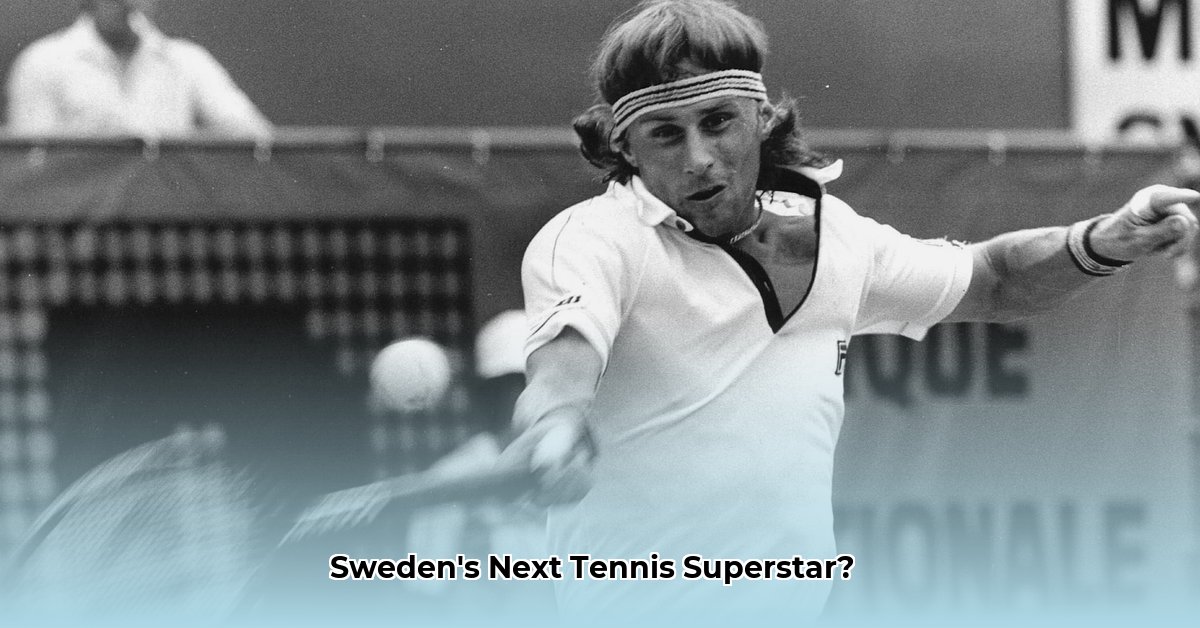
The Search for Sweden's Next Tennis Titan: Beyond Borg and Wilander
Bjorn Borg and Mats Wilander – these names are synonymous with Swedish tennis dominance. Their achievements cast a long shadow, making it a challenge to identify a clear successor. This article delves into the fascinating history of Swedish tennis post-Borg/Wilander, exploring the legacy of Stefan Edberg and other notable players, ultimately challenging the notion of a single "most successful" player. It's a story of incredible talent, unwavering determination, and the inherent difficulties of maintaining elite performance in the demanding world of professional tennis.
Stefan Edberg: A Graceful Giant
Stefan Edberg immediately springs to mind when discussing post-Borg/Wilander Swedish tennis. His six Grand Slam titles are undeniable proof of his prowess. However, his success extends beyond mere trophy counts. Edberg's elegant serve-and-volley style captivated audiences worldwide, adding a touch of class and grace to the often-brutal game. His rivalry with Boris Becker defined an era. Was he the most successful? The answer, as we'll see, is far more complex than a simple yes or no. But his impact is undeniable.
But how do we truly compare greats? Is it solely about Grand Slam wins, or does consistent high ranking play a larger role? This question leads us to consider other players who, while not achieving Edberg's Grand Slam tally, still made significant contributions to Swedish tennis.
Beyond Edberg: A Richer Tapestry of Swedish Tennis
Several other Swedish players deserve recognition for their contributions to the sport's rich history. Let’s not forget:
Magnus Gustafsson: Reaching a career-high ranking of number 9, Gustafsson consistently challenged the world's best throughout the 1990s, maintaining a high standard of play and demonstrating remarkable athleticism and commitment. His presence on the international stage significantly contributed to the continued strength of Swedish tennis after the Borg-Wilander era. His performances alone prove it wasn't just a one-generation phenomenon.
Thomas Enqvist: A stalwart on the ATP tour, Enqvist achieved a world ranking of number 4. His consistency and ability to perform at the highest level for an extended period are testament to his skill and dedication. While his Grand Slam wins fell short of Edberg’s, his consistent high-level performance should not be overlooked. He demonstrated the depth of talent within Swedish tennis.
These players represent the enduring spirit of Swedish tennis. Measuring their success solely by Grand Slam victories is a reductionist approach.
The Enduring Challenge: Sustaining Tennis Excellence
The pressure to replicate the success of iconic players like Borg and Wilander is immense. Maintaining a consistent stream of Grand Slam champions from any nation is a Herculean task. The physical demands of professional tennis are relentless, and injuries can derail even the most promising careers. Mental fortitude plays a crucial role: many exceptional talents never make the breakthrough needed for sustained success. It's a test of physical and mental endurance few can conquer. It's not just about talent; it's about the perfect confluence of factors that lead to sustained success.
What do you think? Is consistent high ranking more important than a few Grand Slam victories?
Redefining Success: A Holistic Perspective
So, who deserves the title of "most successful" Swedish tennis player after Borg and Wilander? Edberg's case is compelling, given his Grand Slam record and iconic style. However, a holistic view reveals a richer story, one that acknowledges the significant contributions of players like Gustafsson and Enqvist. Perhaps the question itself needs re-evaluation. Defining "success" in a more nuanced way, encompassing consistent high-level performance, longevity, and the player's impact on the sport, provides a more accurate and complete narrative. It’s about the legacies they left, not solely the trophies.
The legacy of Swedish tennis extends far beyond the era of Borg and Wilander. The players discussed here show the depth and enduring strength of the nation's tennis tradition. The search for "een van de succesvolste Zweedse tennissers" is therefore far more complex and fascinating than a simple ranking system can capture.